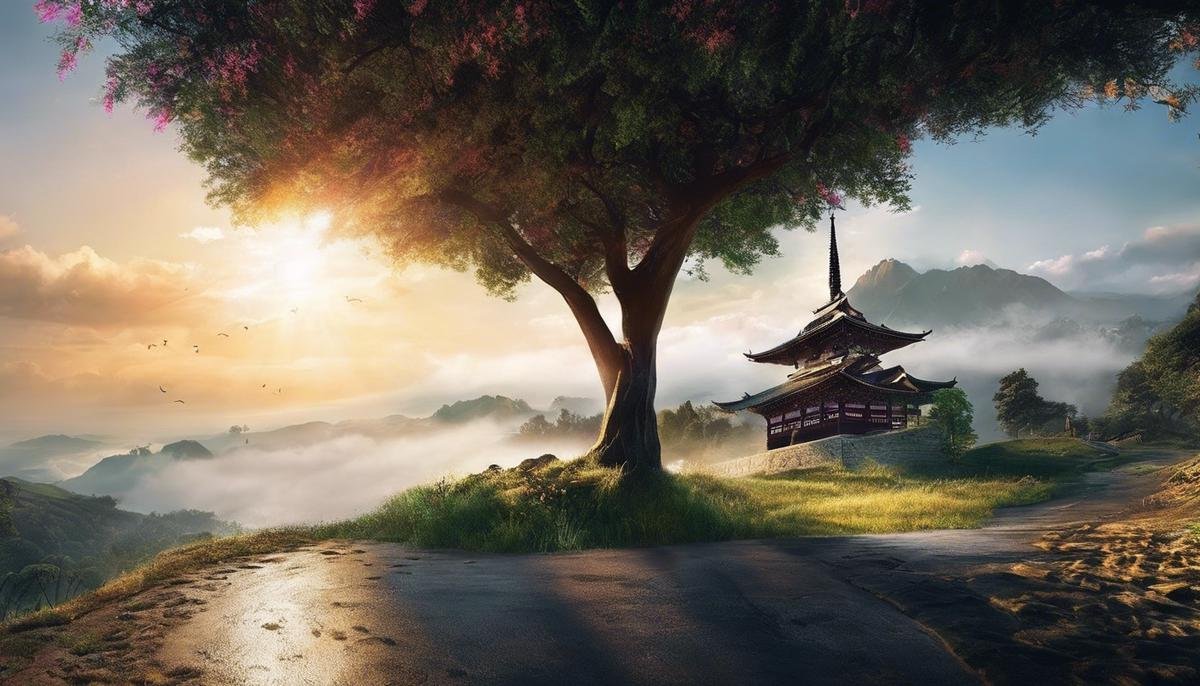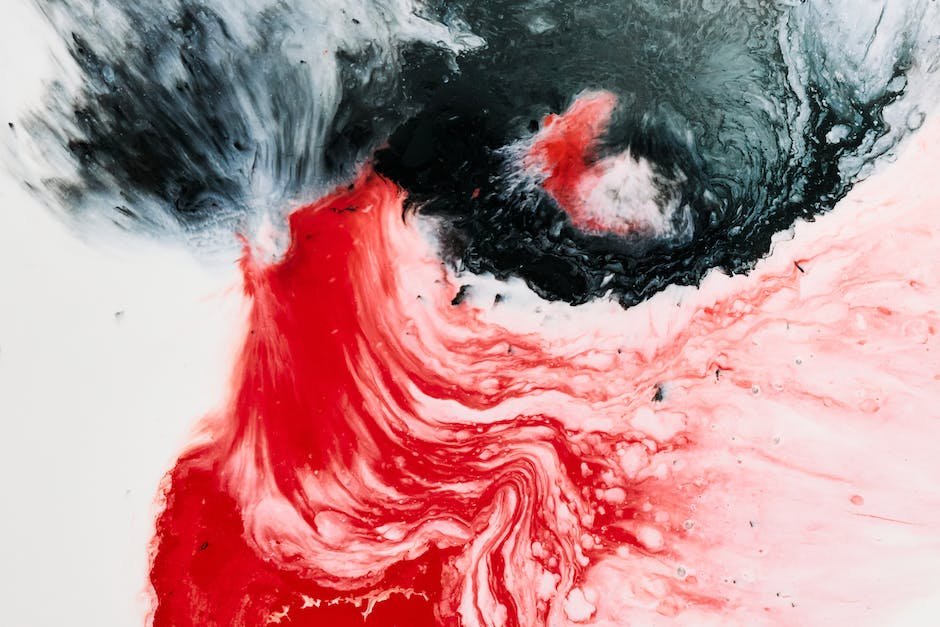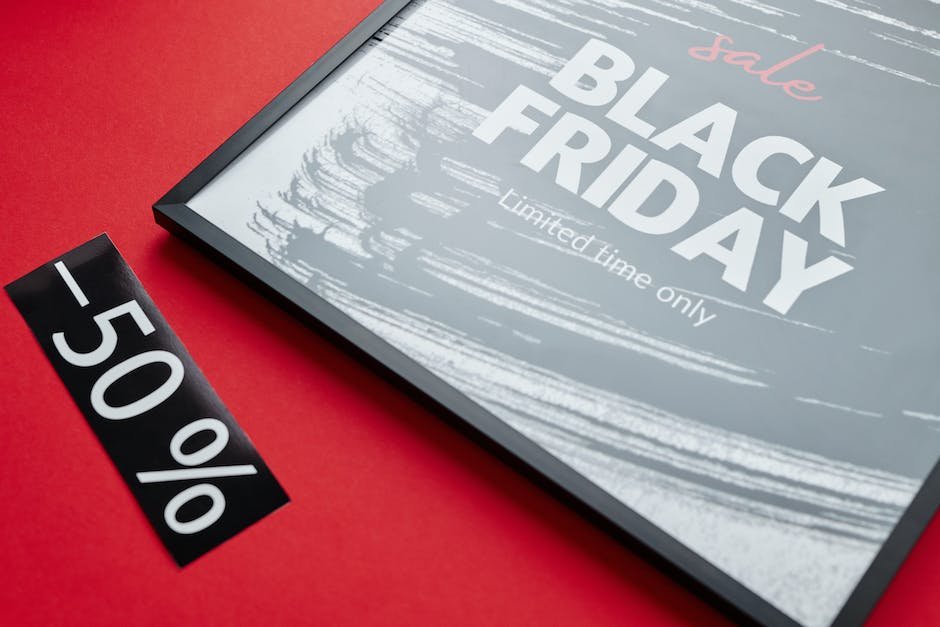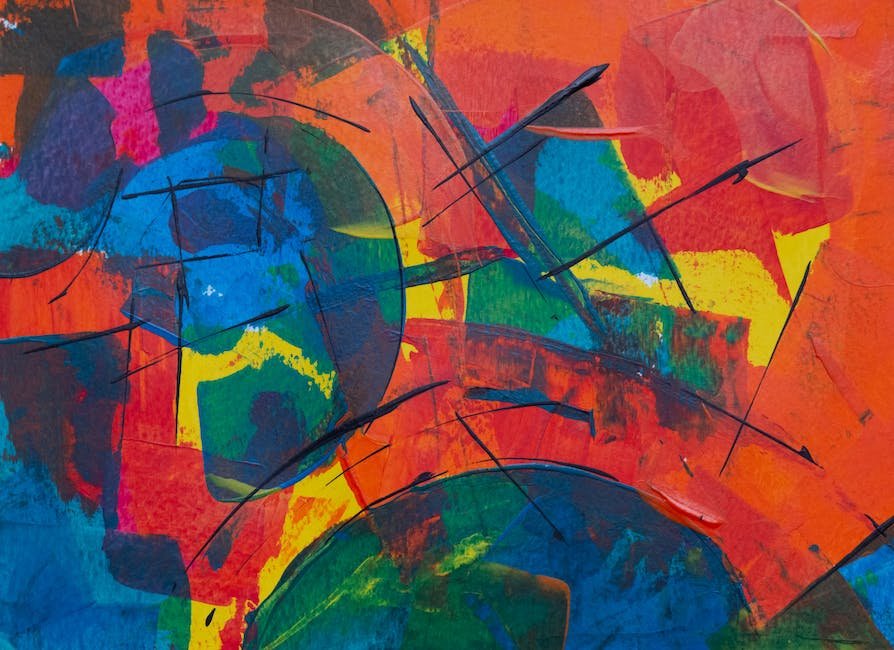In the ever-evolving intersection between technology and creativity, a groundbreaking development has emerged that promises to redefine the landscape of visual art. Dall-e, a cutting-edge artificial intelligence model crafted by OpenAI, has captured the imagination of both tech enthusiasts and artistic communities with its ability to generate captivating digital images from mere textual descriptions. As we step into a world where the lines between human innovation and algorithmic prowess blur, Dall-e stands at the forefront—ushering in a new era of possibilities. This journey through the intricate workings, impacts, and ethical dimensions of Dall-e will not only enlighten us about this novel marvel but also provoke thoughtful consideration of the future it is helping to shape.
What is Dall-e and How Does it Work?
Dall-E: The Future Is Now in Digital Art Creation
If you’re someone who lives and breathes technology, get ready to have your circuits buzzing over Dall-E, the AI system that’s turning the digital art world upside down. Imagine having a personal art assistant that’s not only tirelessly imaginative but also instantly at your service, churning out visual masterpieces from a few typed prompts. That’s Dall-E for you – the artificial intelligence revolutionizing the way digital art is created.In the digital era, where time is as precious as a rare metal, Dall-E is the perfect ally for creatives. Why spend countless hours sketching and illustrating when a neural network can do it in a fraction of the time? With just a brief description, Dall-E generates images that are not just beautiful, but are also original and rich in detail.
But what does this mean for artists and designers? Are they to be cast aside, made obsolete by lines of code? Absolutely not! Think of Dall-E as a tool that amplifies human creativity rather than replaces it. Artists can now explore concepts and visual ideas at a speed and breadth previously unattainable. This doesn’t just save time. It catapults creativity to new heights.
Let’s break it down. Dall-E isn’t just about making pretty pictures; it’s about problem-solving. Need a unique image that meshes a cat with a keyboard in the style of Picasso? No problem. With Dall-E, ideation becomes a breeze, and the limitations of art become blurred lines.
This tool, which may seem straight out of a science fiction novel, is also becoming more accessible to the public, which means it’s ripe for adoption by tech enthusiasts looking to get a taste of creating digital art. The implications are vast – from graphic design to marketing materials, personalized content is now just a few prompts away.
In the traditional digital art creation process, the time from concept to completion can be lengthy. With Dall-E, the gap is closing. This efficiency doesn’t just mean faster output; it brings a level of customization to artwork that’s unparalleled, tapping into the exact desires and specifications of anyone looking to create something visually outstanding.
In summary, Dall-E has crafted a new narrative in the realm of digital art creation, offering boundless potential to merge the analytical with the artistic. It’s about harnessing technology to push the boundaries of the imagination, and for those who speak in algorithms as fluently as in brushstrokes, Dall-E is the next page in the e-book of creative innovation.

The Impact of Dall-e on Art and Artists
The canvas of the future is poised to undergo a radical transformation with the rise of AI systems like Dall-E.
In the vanguard of this change is not just the way art is created, but also how it’s conceptualized from the outset.
Artists traditionally limited by the technical skills or resources at their disposal will find in Dall-E a powerful ally. This technology democratizes the creation process, effectively opening the floodgates of artistic expression to a wider audience. Aspiring artists can forge vivid visuals previously confined to the realm of their imagination, eroding the barriers between vision and capability.
For the art industry, the implications of Dall-E are substantial. Stock photo websites and graphic design have been turned on their head, now that custom imagery is a prompt away. This novelty injects a fresh dynamism into media, advertising, and branding, where tailored graphics become not just a luxury, but a swiftly achieved norm.
Crucially, Dall-E doesn’t just augment reality but rather enables the synthesis of new streams of artistic thought. These AI-generated visuals can serve as a creative prompt for human artists, potentially spurring them towards directions they might not have considered independently.
Moreover, the pedigree of art as an ‘exclusive’ domain is challenged. With tools like Dall-E, everyone from schoolchildren to seasoned CEOs becomes a potential ‘artist’, underscoring the transformative nature of tech and its role in leveling the playing field. This might provoke traditionalists but concurrently emboldens those championing inclusivity in art appreciation and creation.
Granted, this leads to poignant discussions concerning authenticity and originality in art. With an algorithm blending and remixing existing art styles and elements, questions arise about the uniqueness of AI-generated pieces. The future might see a new art category emerge, one defined not by the human hand but by the sophistication of the algorithmic brushstroke.
Let’s not forget the impact on art’s commercial landscape: Dall-E potentially reshapes the supply-demand dynamics. Unique art becomes less about scarcity and more about the nuances of the generation process. This could lead to a reevaluation of what ‘commissioning art’ involves, potentially leading to a shift towards AI as a service in the artistic field.
Artists and educators alike must adapt to this new horizon, possibly restructuring curricula to give rising artists the tools they need to wield AI effectively. The artist of tomorrow might not just be a virtuoso with a brush but also a maestro of algorithms, versed in the language of AI as much as the principles of aesthetics.
All told, the advent of Dall-E signifies not the sunset but the dawn of a new era in artistry, marked by the seamless fusion of human ingenuity and computational power. It is a beacon heralding a future where art transcends traditional boundaries, becoming more accessible, adaptable, and astonishingly diverse. The imagination is the only frontier left: with Dall-E, even that is being redrawn.

Photo by birminghammuseumstrust on Unsplash
Ethics and Authorship in Dall-e Generated Art
Navigating the Labyrinth of Creative Ownership in the Age of AI-Generated Art
So, who exactly owns the artwork produced by Dall-E? It’s a pressing question that stirs legal and ethical debates. When an AI generates an image, it bases its creation on a massive database of existing artwork and photographs it has learned from. Unlike traditional art, where the artist is the clear owner of their work, AI-generated art is not as cut and dry.
Let’s dissect this: when a user inputs a prompt into Dall-E and gets an image, it may seem the user should own that image. They came up with the idea, right? However, the underlying code that made that image is not the user’s handiwork—it’s the AI’s, which was created by engineers and designers at OpenAI.
Currently, OpenAI retains certain rights. When you use Dall-E, you’re agreeing to their terms of service, which gives you a license to use the images, even commercially, but you don’t own them outright. The imagery created by Dall-E is a product of the algorithm, and thus copyright can be a fuzzy area. It’s not the same as writing a song or painting a picture where copyright law clearly assigns ownership to the creator.
Moreover, if the AI’s output closely resembles existing copyrighted material, it can raise more issues. Reproducing the essence or specific elements of another artist’s work without permission may infringe on the original artist’s copyright.
What does this mean for industries traditionally built on copyright ownership? As the technology progresses, laws will undoubtedly need to catch up. Companies may emerge that specialize in securing rights for AI-generated content, or artists might need new types of contracts when incorporating AI into their workflow.
No minor detail, the future of AI in art makes for a gripping plot twist. The conversation unearths fundamental questions about what it means to create and who—or what—can claim ownership of those creations. It forces a reevaluation of what sits at the core of creative rights when intelligence becomes artificial and the artworks, uncannily real.
In the end, while AI art continues to challenge our norms, it’s essential to keep the dialogue open and constructive. Content creators, legal experts, technologists, and policymakers must convene to usher in a framework that respects both human creativity and the innovative prowess of AI. The balance between fostering innovation and protecting individual rights is thin, and the path forward may be complex, but it’s crucial to tread it with intent and clarity.

The Technical Limitations and Challenges of Dall-e
Despite the staggering capabilities of Dall-E and its profound impact on the art and design world, the technology is not without its limitations and challenges. In the ever-evolving landscape of artificial intelligence, it’s crucial to acknowledge these hurdles to pave the way for more refined solutions. Let’s delve into the constraints currently faced by Dall-E technology.
Firstly, the quality and diversity of outputs from Dall-E heavily rely on the data it was trained on. If the dataset lacks variety or contains biases, the AI system’s artwork might inherit these shortcomings, leading to a lack of representation or perpetuation of stereotypes. It’s a reminder of the adage: “garbage in, garbage out.”
Scalability poses another challenge. Dall-E’s high computational needs mean costs could skyrocket when scaling up operations. Not every artist or company will have the resources to access the required processing power, potentially limiting who can use this revolutionary tool.
Moreover, there’s the lack of interpretability – how Dall-E arrives at a particular output might be arcane to users. Without understanding the AI’s decision-making process, artists cannot fine-tune creations as precisely as they might wish, possibly leading to frustration and a waste of time.
Interfacing Dall-E with other software also poses a hurdle. Seamless integration is key for efficient workflows. However, adapting Dall-E to mesh well with existing tools means overcoming compatibility snags and user interface design problems.
Ethical issues cannot be overlooked. Dall-E’s ability to create realistic images raises concerns about the generation of deepfakes that can be used for misinformation or illicit activities. Ensuring that the technology is used responsibly lies with the developers and the community, but it’s a pressing concern.
Finally, there’s the loop of feedback and improvement – how do we ensure that Dall-E continues to learn and improve, avoiding stagnation? Establishing effective methods for iterative feedback that helps the AI grow without veering off course is a monumental task.
In conclusion, while Dall-E promises to catalyze a revolution in art and design, tackling these limitations and challenges is essential. Only by confronting these issues head-on can we continue to harness AI’s full potential in creative industries. The journey of Dall-E, like all technology, is one of continual progress and adaptation.

Future Developments and Potential of Dall-e
Advancements in Dall-E Tech: What’s Next for AI-Driven Art?
As the frontiers of artificial intelligence (AI) continue to expand, the curiosity about where technologies like Dall-E are heading is just as fervent. With the capabilities of AI-generated art reaching new heights, there is a deliberation of what advancements in Dall-E tech are on the horizon. Buckle up, tech enthusiasts, because the future is filled with some game-changing upgrades that promise to redefine the way we interact with AI-driven creativity.
Increased Resolution and Detail in Imagery
The evolution of Dall-E will likely bring about a significant leap in the output quality. Expect to see images of higher resolution, richer texture, and greater detail. As technology scales, the granular precision of these images might reach a point where distinguishing between an AI-generated piece and a high-definition photograph becomes a true challenge.
Enhanced Interpretation of Complex Prompts
Today, Dall-E can interpret brief descriptions and turn them into visual wonders, but there’s room for enhancement. Upcoming versions could have a profound understanding of intricate prompts. This means users can feed in complex and abstract concepts, and Dall-E could generate even more nuanced and sophisticated artworks.
Real-Time Collaboration
Imagine an AI that can work alongside artists in real time. Future iterations of Dall-E could offer interactive capabilities where the AI responds immediately to feedback, enabling a dynamic creation process that blends AI efficiency with human direction. Artists could tweak AI-generated images on the fly, as easily as brainstorming ideas with a human collaborator.
Advanced Style Mimicry
Over time, Dall-E might evolve to not just produce images in a particular style, but also to capture the essence of a specific artist’s touch. The AI could develop the ability to analyze an artist’s portfolio and generate new works that genuinely resonate with the signature flair of their existing body of work.
3D Model Generation
The next wave of Dall-E’s technology might go beyond flat imagery. With advancements in understanding spatial relationships, the AI could start to produce 3D models based on textual descriptions. This capability would revolutionize fields such as game development, virtual reality, and even architecture.
Improved Bias Detection and Correction
AI is not free from biases present in the data it learns from. Future versions of Dall-E will need to incorporate advanced bias detection algorithms to ensure the fair representation of subjects in imagery. Eradicating bias will be pivotal in fostering an environment of inclusivity and diversity within AI-generated content.
Integration with Other Creativity Software
Expect Dall-E to become more seamlessly integrated with other digital art and design software. This will allow users to easily transfer AI-generated elements into their workflow, using tools they are already familiar with. The interaction between Dall-E and popular creative suites could become so intuitive that it feels like an extension of the software itself.
Refined User Interfaces for Broader Adoption
To encourage widespread adoption, future versions of Dall-E will most likely come with more user-friendly interfaces. Simplifying the user experience paves the way for individuals who may not be as tech-savvy to harness the power of AI in their creative process.
Responsive Evolution Based on User Feedback
The technology behind Dall-E will continue to mature, informed by an ongoing dialogue between users and developers. By incorporating feedback, each iteration can be finetuned, leading to a more robust and user-centric platform.
As advancements in Dall-E tech burgeon, the landscape of art and creativity will inevitably shift. Artists, designers, and enthusiasts await these developments with bated breath, ready to embrace the limitless possibilities that AI-driven tech promises. With these upcoming enhancements, Dall-E is sure to cement its place not just as a tool for creation, but as a catalyst for revolutionizing art in the digital age.

The sphere of artificial intelligence is a canvas of constant metamorphosis, and Dall-e is one of its most fascinating brushstrokes to date. By transforming the way we conceive and interact with art, Dall-e carries us into uncharted territories of expression and creation. As we contemplate the shifting horizons of art and technology, we are witnesses to the infancy of a revolution that may well define the cultural and creative touchstones of tomorrow. Though the journey is replete with challenges and ethical quandaries, our collective engagement with platforms like Dall-e will undoubtedly illuminate the path that art will traverse in the digital age, ensuring that human creativity continues to flourish in concert with the symphony of machine intelligence.




